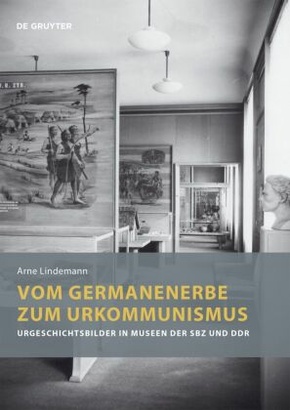Vom Germanenerbe zum Urkommunismus - Urgeschichtsbilder in Museen der SBZ und DDR
| Verlag | De Gruyter |
| Auflage | 2022 |
| Seiten | 405 |
| Format | 18,3 x 2,5 x 24,4 cm |
| Großformatiges Paperback. Klappenbroschur | |
| Gewicht | 990 g |
| ISBN-10 | 311076086X |
| ISBN-13 | 9783110760866 |
| Bestell-Nr | 11076086A |
Die in vielen Museen der DDR präsentierte "Geschichte der Urgesellschaft" war ein fester Bestandteil des nationalen Geschichtsbilds des "Arbeiter- und Bauernstaats" und unterstützte die historische Legitimierung der SED-Diktatur. Allerdings besaß die sozialistische Urgeschichtserzählung mit dem in der NS-Zeit propagierten Bild der "Germanischen Vorzeit" ein ideologisch hoch belastetes Erbe. Die Museen standen angesichts des politisch verordneten Antifaschismus vor der Aufgabe, in ihren Ausstellungen den narrativen Turn vom "germanischen" zum marxistischen Urgeschichtsbild zu meistern. Entlang eines umfangreichen Korpus an Ausstellungsfotos analysiert die Studie die museale Darstellung der Urgeschichte in der SBZ und DDR sowie die Diskurse, die zum Wandel oder zur Beständigkeit von Geschichtsbildern führten.
In the German Democratic Republic (GDR), prehistory was part of the national narrative that served to legitimize the dictatorial regime of the Socialist Unity Party of Germany (SED). However, the socialist conception of prehistory came up against a heavily loaded ideological legacy in the wake of the notions of 'German prehistory' that had been espoused during the National Socialist period. Museums were tasked with mastering the politically prescribed narrative shift from an ethnic-nationalist conception of prehistory to a Marxist one. Using an extensive body of exhibition photos, this doctoral project analyses the depiction of prehistory in museums of the Soviet Occupation Zone and the GDR as well as discourses that led to the alteration or persistence of related concepts.

